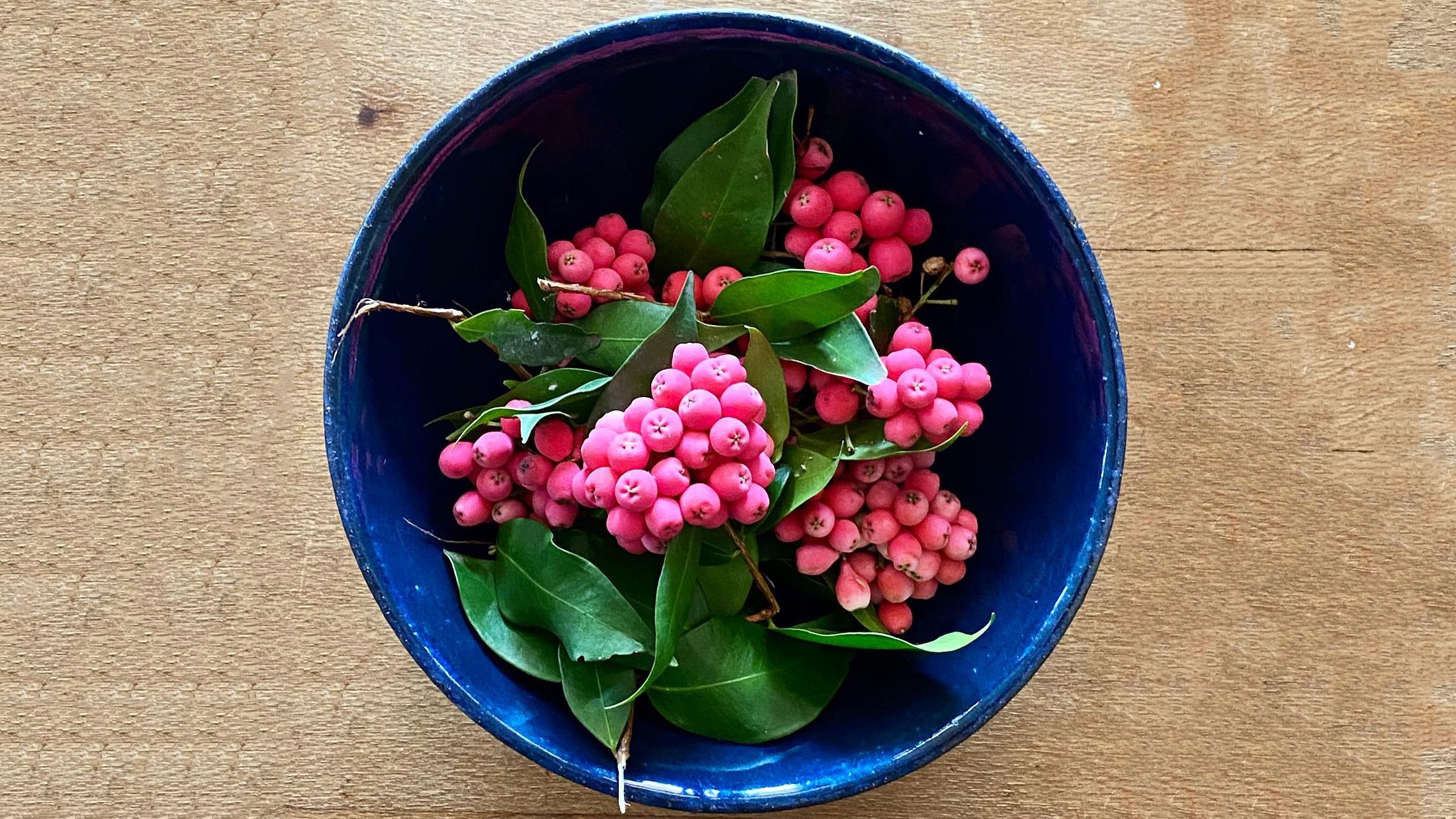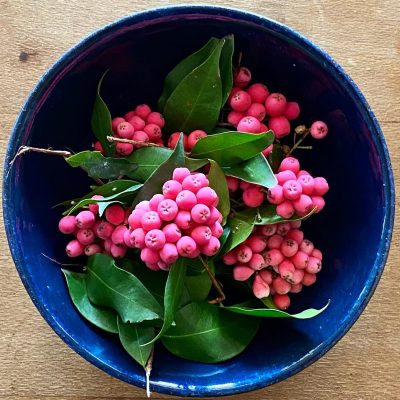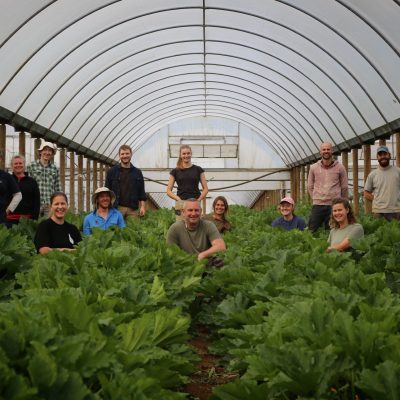This tasty bushtucker treat could be growing in your street! Yep, we’re talking about Australian native Lilly Pilly Berries. If you have ventured around your local neighbourhood during Autumn, you’ve likely brushed past a Lilly Pilly tree filled with bright pink Lilly Pilly Berries.
It is one of Australia’s most popular native plants. Around 50 species of Lilly Pilly can be found in Australia alone, all with different shapes, sizes, colours, and flavours (Tucker Bush, 2020). You may have also heard them referred to as ‘bush cherries’ or ‘riberries’. Either way, these little pink gems are part of the Syzygium genus of flowering plants that belongs to the myrtle family, Myrtaceae (Specialty Produce, 2024).
The plants grow year-round in Australia and are commonly used for shade or screen thanks to their dense, glossy green leaves (Veenhuyzen, 2014). The bright magenta fruits can be seen popping up around Autumn but are frequently frozen and preserved to be enjoyed for longer.
Are Lilly Pilly Berries Edible?
When we talk about edible plants around us, it’s hard to go past Lilly Pilly Berries. However, many Aussies do daily. You may have thought to yourself, “Can I eat these?” and a responsible adult has likely said no. But all varieties of Lilly Pilly Berries are edible. While some are not as palatable as others, most are quite tasty!
Please note that it is not legal to forage unless you have a forager’s license or are a traditional owner. You can, however, grow them at home! That way you also know what’s being put in it and can watch these beauties grow for yourself.
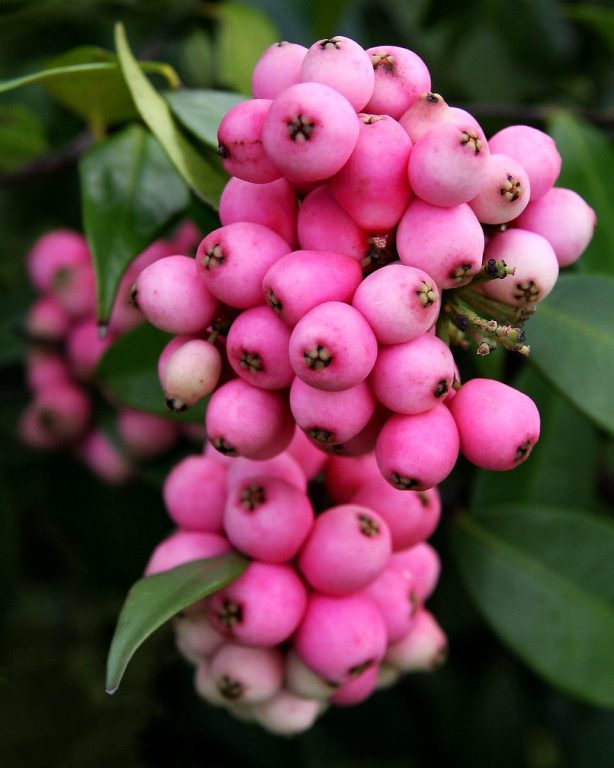
Traditional Uses for Lilly Pilly Berries
For a plant commonly used to prevent your neighbours from peering into your windows, Lilly Pilly Berries are pretty remarkable. They are featured widely in traditional Aboriginal medicine, being used to treat sore ears, wounds, and skin conditions, earning the name’ medicine berries’ (Australian Native Food and Botanicals, 2009). Being high in vitamin C, they were also consumed as an immune system booster.
Native food queen and owner of Karkalla Byron Bay, Mindy Woods informed us that Lilly Pillys are super versatile and have been taken care of and used by many First Nations communities for thousands of years.
With regard to cultural information, it is generally encouraged that as custodians of traditional knowledge, mob are the ones who hold responsibility and discretion to share knowledge, stories and information related to traditional uses of native foods.
The brightly coloured berries were generally gathered by Aboriginal women and children. They were primarily consumed fresh, out-of-hand, but they were also dried and stored for extended periods to make them easy to carry when travelling on foot (Specialty Produce, 2024).
What Do Lilly Pilly Berries Taste Like?
Wax Jambu is a good place to start. In terms of flavour and texture, the two have a lot in common, as both species belong to the same family (Veenhuyzen, 2014). They have a crisp and crunchy texture with a sweet-tart, musky taste (Specialty Produce, 2024). Clarence Slockee from ABC’s Gardening Australia says they can be quite sour, but, like many bush fruits, they’re high in vitamin C and very good for you. Growing conditions and climate can actually alter the flavour and texture of the fruit, so it’s a bit of a lucky dip sometimes (Specialty Produce, 2024)!
How To Use Lilly Pilly Berries
In our humble opinion, these are best eaten fresh off the tree. But they can be used in a variety of dishes, from sweet to savoury. They add a standout Aussie twang to jams, chutneys, cocktails, cakes, tarts, and muffins and also make a great sauce to go with game meat (Veenhuyzen, 2014).
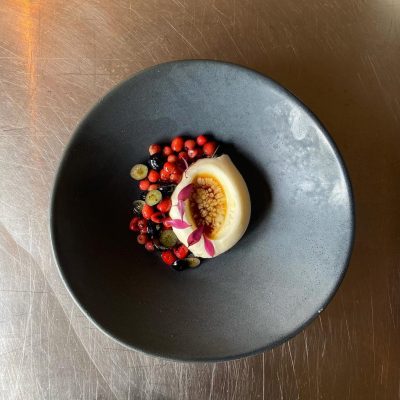
Lilly Pilly berries have a rich culture heritage and contribute to Australia’s wonderful biodiversity. As you explore your local surroundings, keep an eye out for these magenta gems and think back to their epic journey from bush tucker to contemporary kitchens.
Please note: We do not currently have Lilly Pilly Berries for wholesale through Suncoast Fresh; this blog is purely for educational purposes. However, we do have a wide range of other Australian Natives available. Reach out here if you are interested.
References:
Australian Native Food and Botanicals. (2009). Riberry. ANFB. https://anfab.org.au/main.asp?_=Riberry
Specialty Produce. (2024). Lilly Pilly Berries. Specialty Produce.
https://specialtyproduce.com/produce/Lilly_Pilly_Berries_9395.php
Tucker Bush. (2020). Meet the Lilly Pilly, this season’s backyard superfood. Tucker Bush. https://tuckerbush.com.au/meet-the-lilly-pilly-this-seasons-backyard-superfood/
Veenhuyzen, M. (2014, May 21). Bush food: riberries. The Guardian. https://www.theguardian.com/lifeandstyle/australia-food-blog/2014/may/21/bush-food-riberries

